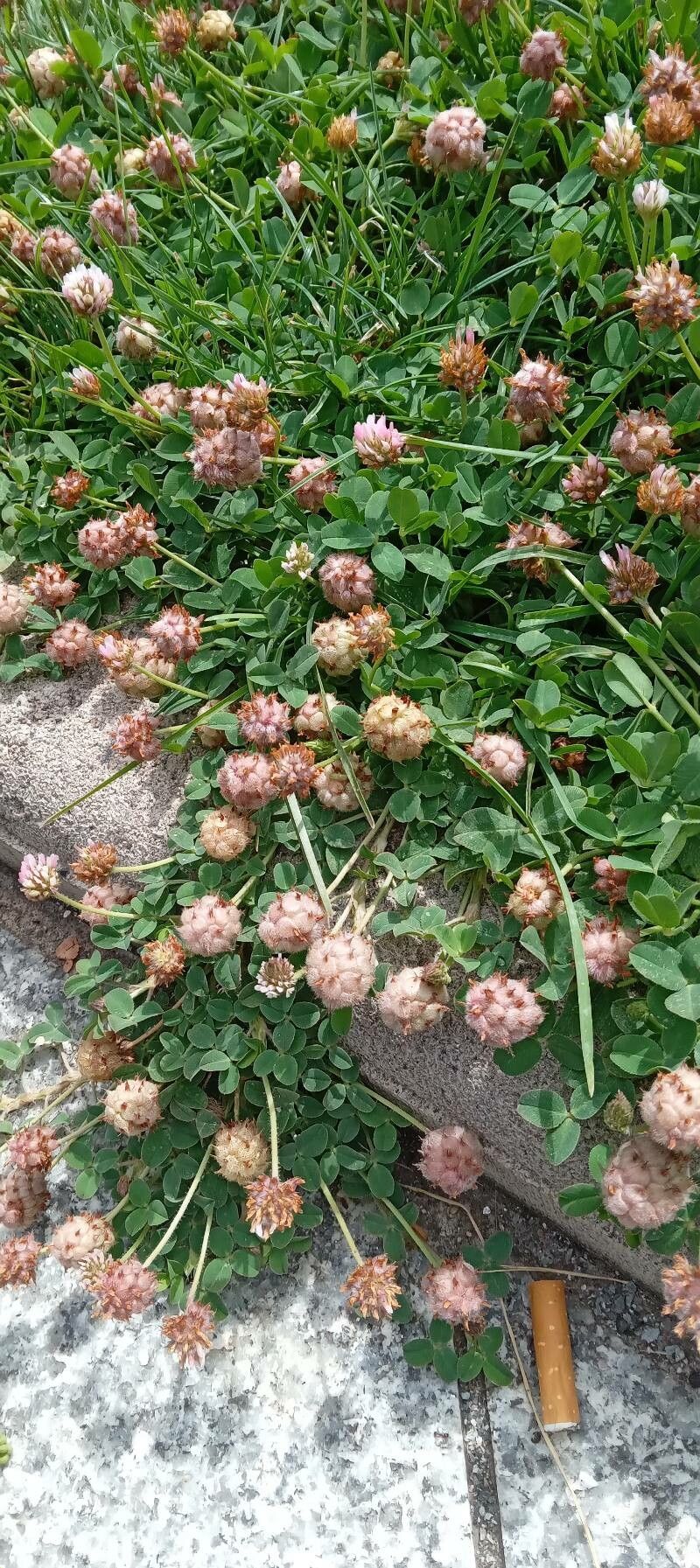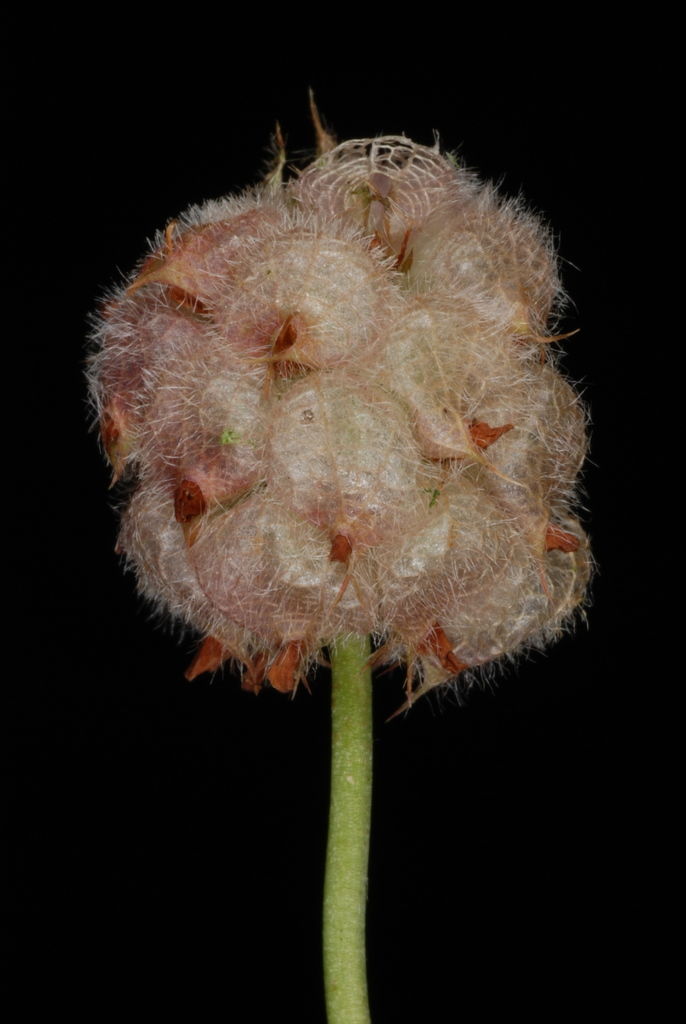Strawberry Clover
trifolium fragiferum
Also known as: ["Strawberry Clover","Fragrant Clover"]
Overview
A perennial clover species with distinctive strawberry-like flowers and trifoliate leaves, native to Europe and Asia.
Benefits & Perks
["long-flowering","drought tolerant","wildlife attractant (bees, butterflies, birds)","low maintenance"]
Botanical Classification
| Phylum: | Magnoliophyta |
| Class: | Magnoliopsida |
| Order: | Fabales |
| Family: | Fabaceae |
| Genus: | Trifolium |
| Botanical Name: | Trifolium fragiferum |
Plant Characteristics
Basic Information
- Category: Flowers
- Suitable Location: outdoor garden bed in a sunny area with good air circulation
- Suitable For:
- Is Weed: No
- Allergenicity: low
Environmental Needs
- Climate: {"temperatureRange":"5–30°C"}
- Hardiness: {"zones":"6–9"}
- Misting: rarely required, only if ambient humidity is very low
- Drainage: Fast-draining to prevent waterlogging.
- Soil Type: Well-draining, loamy soil with organic matter; tolerates sandy or clay soils if amended.
Maintenance Level
- Maintenance Level: low
- Toughness Level: high
- Pruning Frequency: As needed, typically every 2–3 months or after flowering.
- Pruning Intensity: Light to moderate; avoid heavy pruning unless necessary.
Care Details
Ideal Sunlight Coverage:
Full sun (6–8 hours/day); tolerates partial shade in hot climates.
Sunlight Tolerance Tips:
Acclimate plants gradually to intense sunlight; protect from harsh afternoon sun; adjust placement based on seasonal light intensity.
Care Requirements
Care Difficulty
easymoderate
Sunlight
full sun to partial shade
Rotate plant for even light exposure; use sheer curtains to filter intense sun; avoid direct midday sun in summer.
Watering
every 7–10 days, allowing soil to dry slightly between waterings
Water thoroughly but infrequently; ensure soil dries between waterings; avoid wetting foliage.
Soil
well-drained, sandy loam with moderate organic content
pH: Slightly acidic to neutral (pH 6.0–7.0).
Avoid compacted soil; ensure proper drainage; enrich with compost annually.
Temperature
Prefers cool to moderate temperatures (60–75°F/15–24°C); tolerates mild frosts.
Avoid sudden temperature shifts; protect from frost; ensure good air circulation.
Fertilizing
every 4–6 weeks during active growth with a balanced liquid fertilizer
Fertilize sparingly to prevent salt buildup; flush soil occasionally to remove excess nutrients; apply after watering to prevent root burn.
Propagation
Methods
Stem cuttings or division; seeds can also be used but may be slower to establish.
Step-by-Step Propagation Guide
- Take a 4–6 inch cutting.
- Remove lower leaves.
- Dip in rooting hormone (optional).
- Plant in medium.
- Keep moist and warm.
Best Time: Spring or early summer when the plant is actively growing.
Environment
Warm, humid conditions with indirect light; maintain consistent moisture.
Medium
Well-draining potting mix with perlite or sand; can also root in water.
Hormone
Optional but recommended for faster rooting.
Timeline
Roots typically form in 2–4 weeks; new growth may take 6–8 weeks.
Tools Needed
Pruning shears, rooting hormone, small pots, well-draining mix.
Quick Tips
Use healthy, non-flowering stems; maintain high humidity; avoid direct sun during rooting.
Pruning & Repotting
Pruning Guide
Method
Pinch back tips for bushier growth; trim leggy stems; remove spent flowers.
Pruning Plan
Prune to maintain shape, encourage bushier growth, and remove dead or diseased parts.
Tools
Pruning shears, clean scissors, gloves.
Checklist
Sanitize tools; prune dead/damaged parts; shape the plant; remove spent blooms.
Repotting Guide
Best Season
Spring, before the active growing season begins.
Pot Size
One size larger pot (e.g., +2 inches in diameter); ensure good drainage.
Method
Remove plant gently; trim roots if crowded; place in a slightly larger pot with fresh soil; water lightly.
Suggestions
Repot every 1–2 years or when roots fill the container; beneficial for growth and soil health.
Checklist
Choose appropriate pot; prepare fresh soil mix; handle roots carefully; water after repotting.
Advanced Care Tips
Watering Mastery
Watering Checklist
Check soil moisture; water deeply; ensure drainage; avoid wetting leaves.
How to Apply Water Properly
Water at the base of the plant, ensuring moisture reaches the root zone; allow excess water to drain away; water early in the day to minimize evaporation.
Watering Schedule Tips
Water deeply once the top inch of soil feels dry; reduce frequency in winter to prevent root rot.
Soil Improvement
Add compost or organic matter for fertility; mix perlite or sand for drainage; ensure good aeration.
Temperature Stress Management
Signs of Temperature Issues
Wilting, yellowing leaves, or stunted growth in extreme heat or cold.
Cold Stress
Slows growth; may cause leaf discoloration or dieback in prolonged freezing conditions.
Solution: Provide frost protection; move containers indoors; use mulch to insulate roots.
Hot Stress
Leaves may scorch, wilt, or drop; growth may slow in excessive heat.
Solution: Provide shade during peak heat; increase watering; use mulch to retain soil moisture.
Fertilizing Guide
Fertilizing Checklist
Check fertilizer type; dilute properly; apply during active growth; avoid winter feeding.
Fertilizing Method
Use balanced liquid fertilizer diluted to half strength every 4–6 weeks during growing season; avoid fertilizing in winter.
Common Problems & Solutions
Toxicity Warning
Cats
Non-toxicTrifolium fragiferum is not toxic to cats. The plant lacks compounds that are known to be harmful to felines when ingested.
🌿 Toxic Parts:
⚡ Toxic If:
if eaten
Dogs
Non-toxicTrifolium fragiferum is not considered toxic to dogs. The plant does not contain known toxic substances that would pose a health risk to canines upon ingestion.
🌿 Toxic Parts:
⚡ Toxic If:
if eaten
Humans
Non-toxicTrifolium fragiferum, commonly known as strawberry clover, is generally considered non-toxic to humans. It is not known to produce any significant toxic compounds that would cause adverse health effects upon ingestion.
🌿 Toxic Parts:
⚡ Toxic If:
if eaten
Frequently Asked Questions
Q: Is Strawberry Clover toxic to pets?
A: No, it is non-toxic to dogs and cats.
Q: Does Strawberry Clover attract wildlife?
A: Yes, it attracts bees, butterflies, and birds.
Q: How easy is it to care for Strawberry Clover?
A: It is very easy to care for, requiring minimal maintenance.
Quick Reference
| Family: | Fabaceae |
| Care: | easy |
| Light: | full sun to partial shade |
| Water: | every 7–10 days, allowing so |
Get Expert Care Tips
Download the Plantious app for personalized care reminders and plant identification!
Google Play App Store








